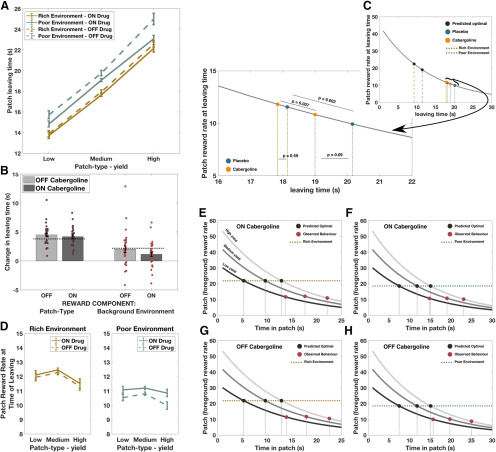Figure 3.
Cabergoline alters use of background reward information to guide patch leaving. A, Mean patch-leaving times for each patch type, split by environment and drug state. B, There was a significant interaction between drug and background (environment) reward rate on leaving time, with a reduced effect of background environment ON cabergoline compared with OFF (p = 0.023). In contrast, there was no significant interaction between drug and the effect of changing foreground (patch type) reward on patch leaving (p = 0.26). Black dotted lines indicate the predicted magnitude of effect of changing patch type and background environment, based on the MVT. C, Instantaneous patch reward rate at time of leaving, collapsed across patch types. Participants showed a significant bias to leave all patch types later than optimally predicted. The effect of cabergoline was mainly driven by participants leaving patches in the poor environment earlier ON drug and, therefore, when the current patch reward rate was higher (inset). D, Alternative representation of data, plotting instantaneous reward rate at time of leaving each patch type in each environment, ON and OFF cabergoline. E–H, Relationship between patch-leaving time and patch reward rate for each condition, ON and OFF cabergoline. N = 29, comparisons are within-subject. Error bars indicate ± SEM.

